Pottery Pioneers
Wedgwood
Josiah Wedgwood is renowned as the founding father of the British pottery industry because of his pioneering production processes and marketing genius. His innovative designs appealed to the fashionable elite of the 18th century, who shopped at his prestigious London showroom for their tableware and ornamental vases to enhance their homes. The prevailing style of interior decoration was Neo-Classical, derived from the arts of Greece and Rome and inspired by connoisseurs returning from the Grand Tour of Europe. Wedgwood’s famous Jasperware urns and vases, adorned with mythological figures, were perfect for the stylish interiors of the period.
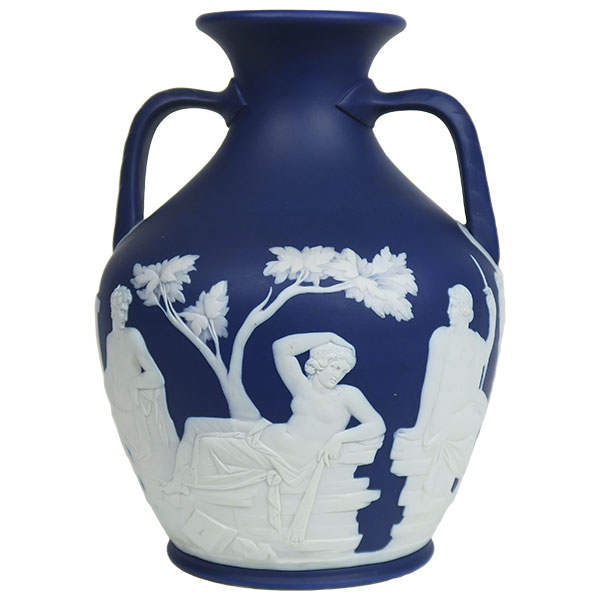
The Wedgwood Portland Vase
c.1850
Birth of Achilles Jasper Jar c.1800
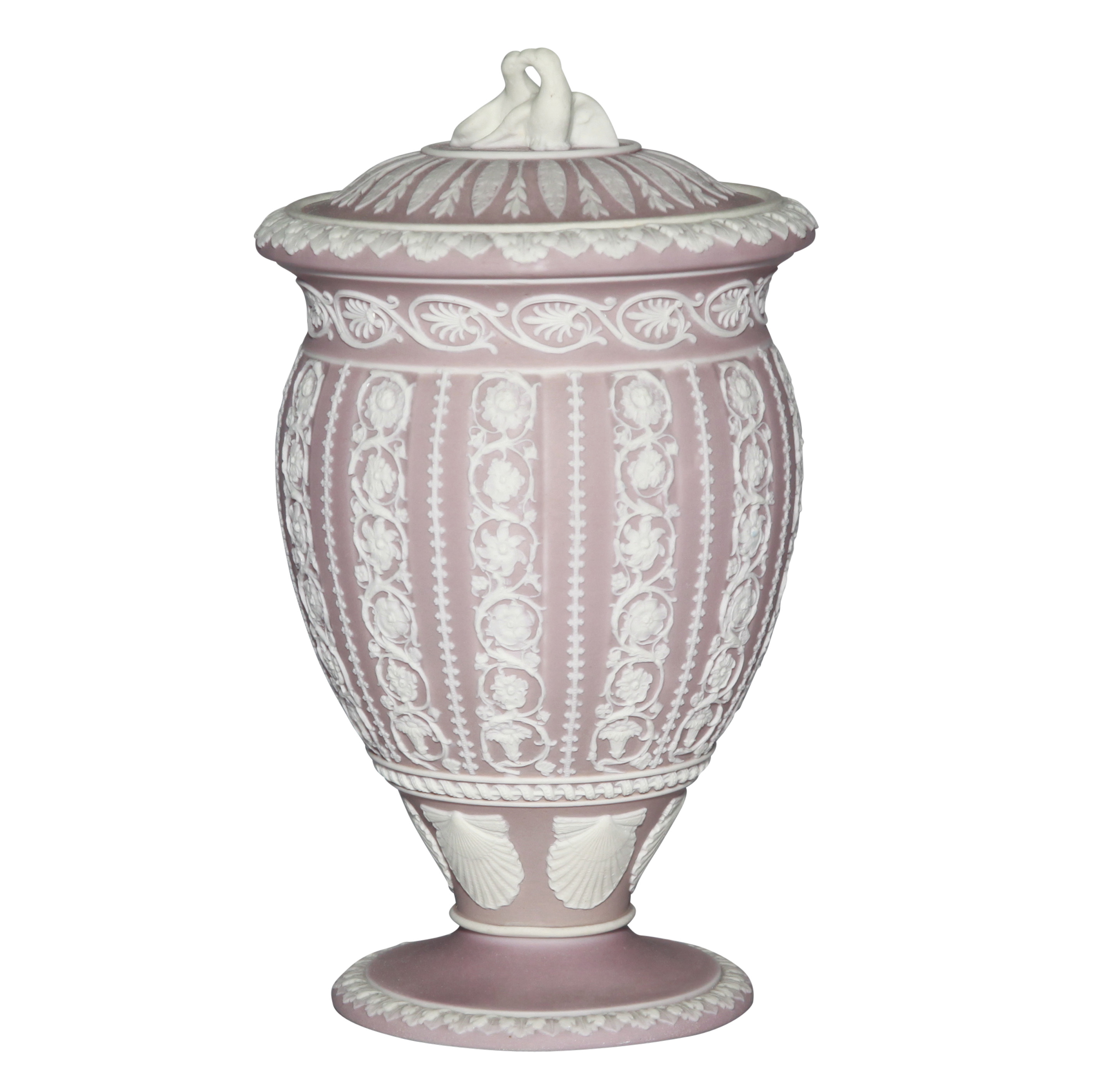
Lovebird Finial Jasper Jar c.1850

Crimson Jasper Jug c.1920
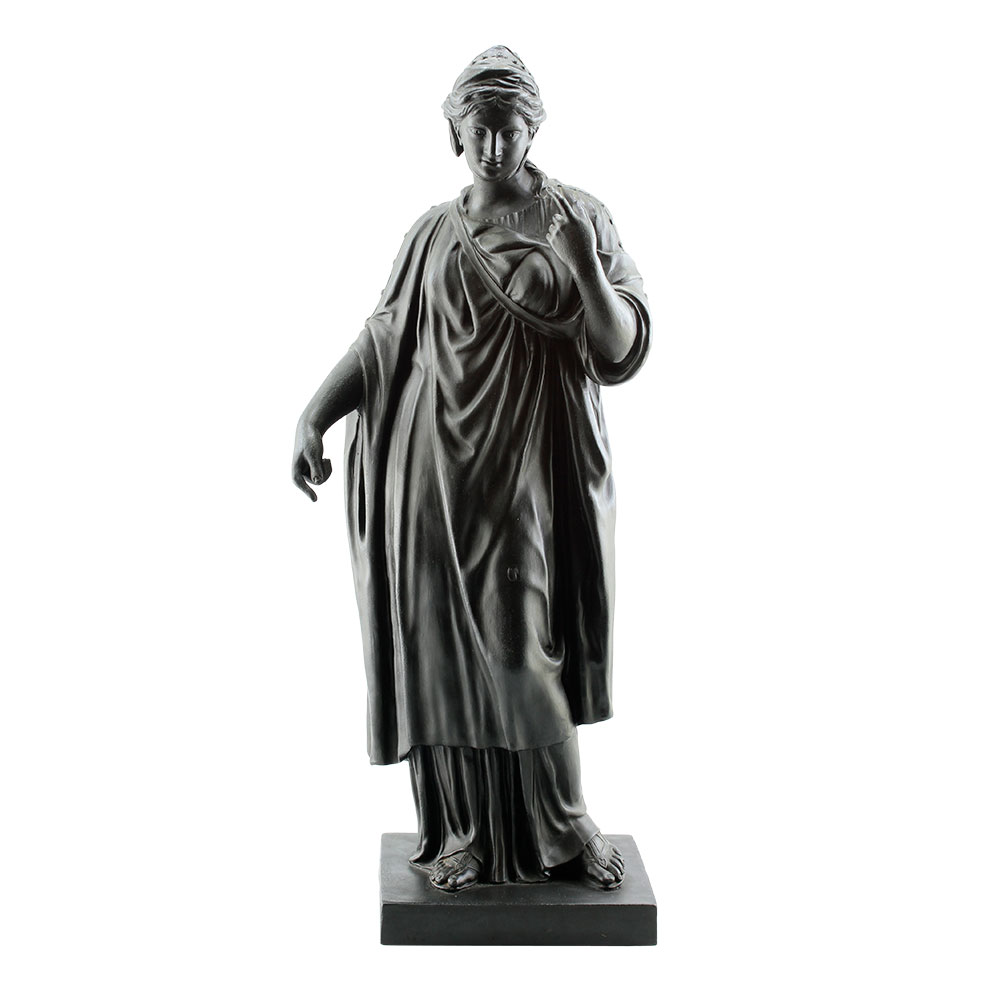
Zingara Basalt Figure c.1825
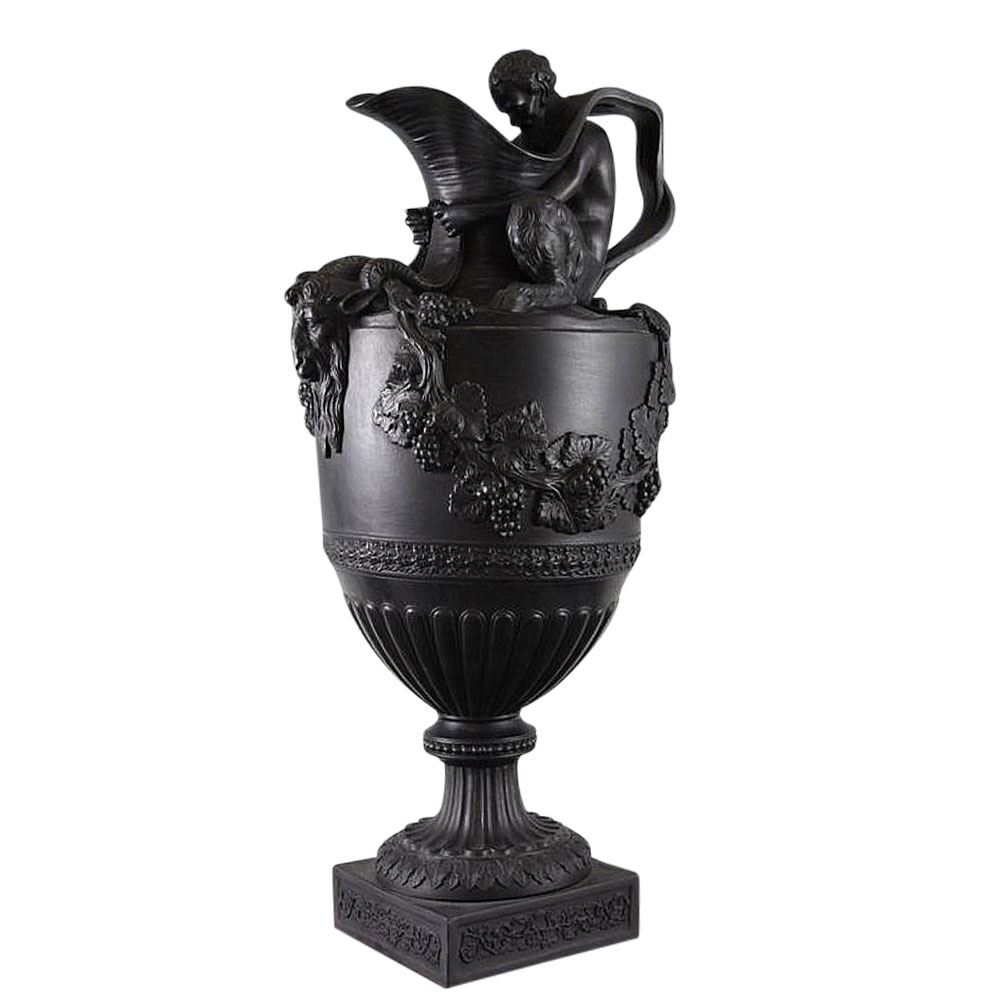
Sacred to Bacchus Basalt Ewer c.1850
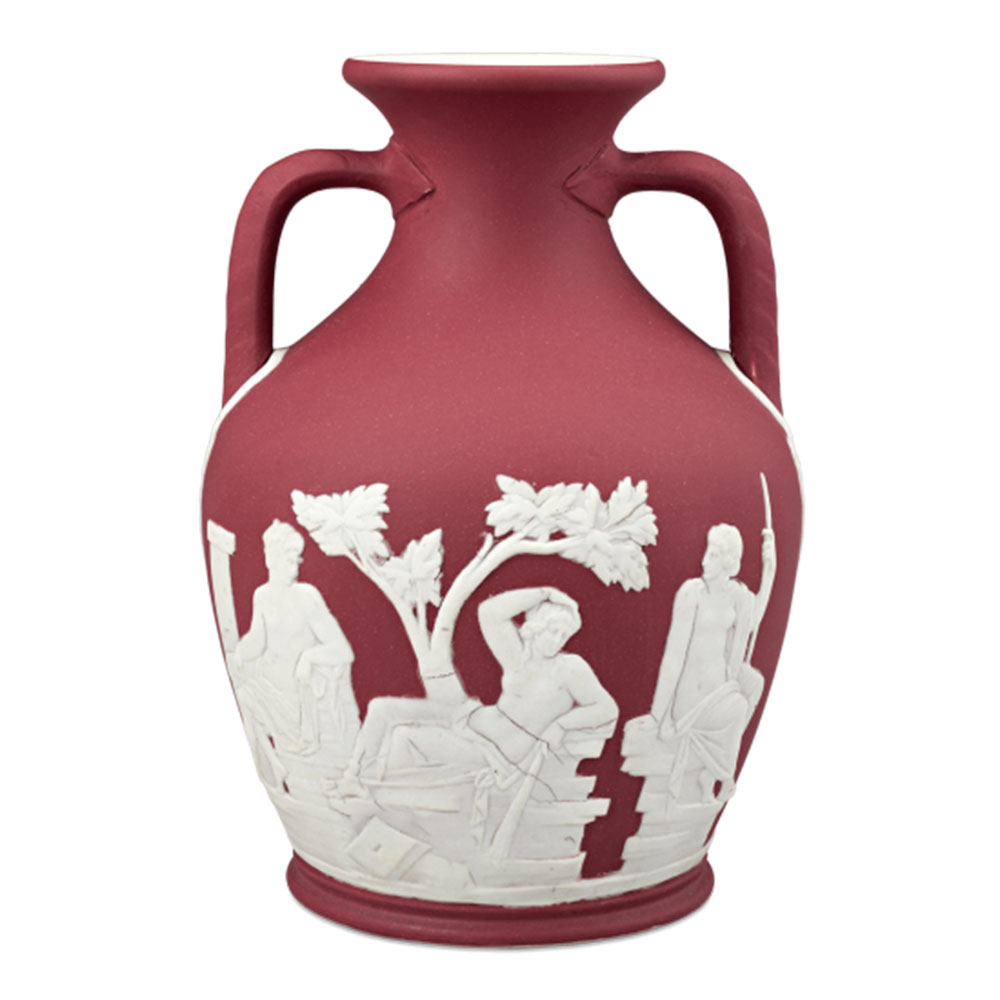
Crimson Dip Jasper Portland Vase c.1920
The Parian Phenomenon
Matte white porcelain statues of Greek gods and goddesses were ideal as Neo-Classical décor. Known as Parian Ware, the slip-cast porcelain took its name from the marble quarried in Paros, Greece and was developed initially by the Minton and Copeland factories in the 1840s. Wedgwood followed with Carrara Ware, named after the Italian marble. Reproductions of sculptures from antiquity could be made with the aid of Cheverton’s newly invented reducing machine, and original designs were commissioned from distinguished sculptors of the day. The Parian phenomenon made sculpture widely accessible just as engraved prints replicated famous paintings.

Copeland Parian Daphne by M. Wood c.1865
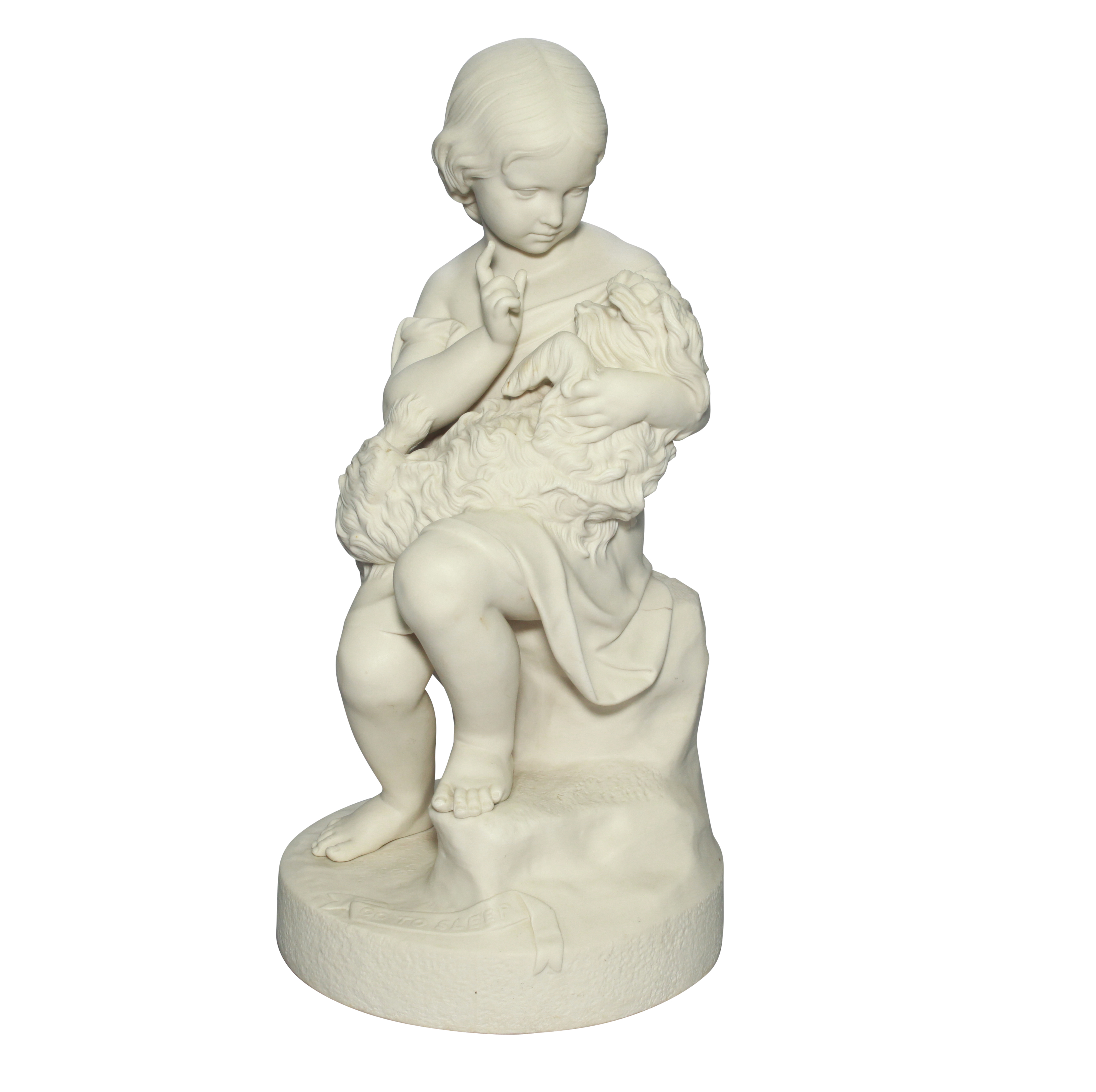
Copeland Parian Go to Sleep by J. Durham c.1864
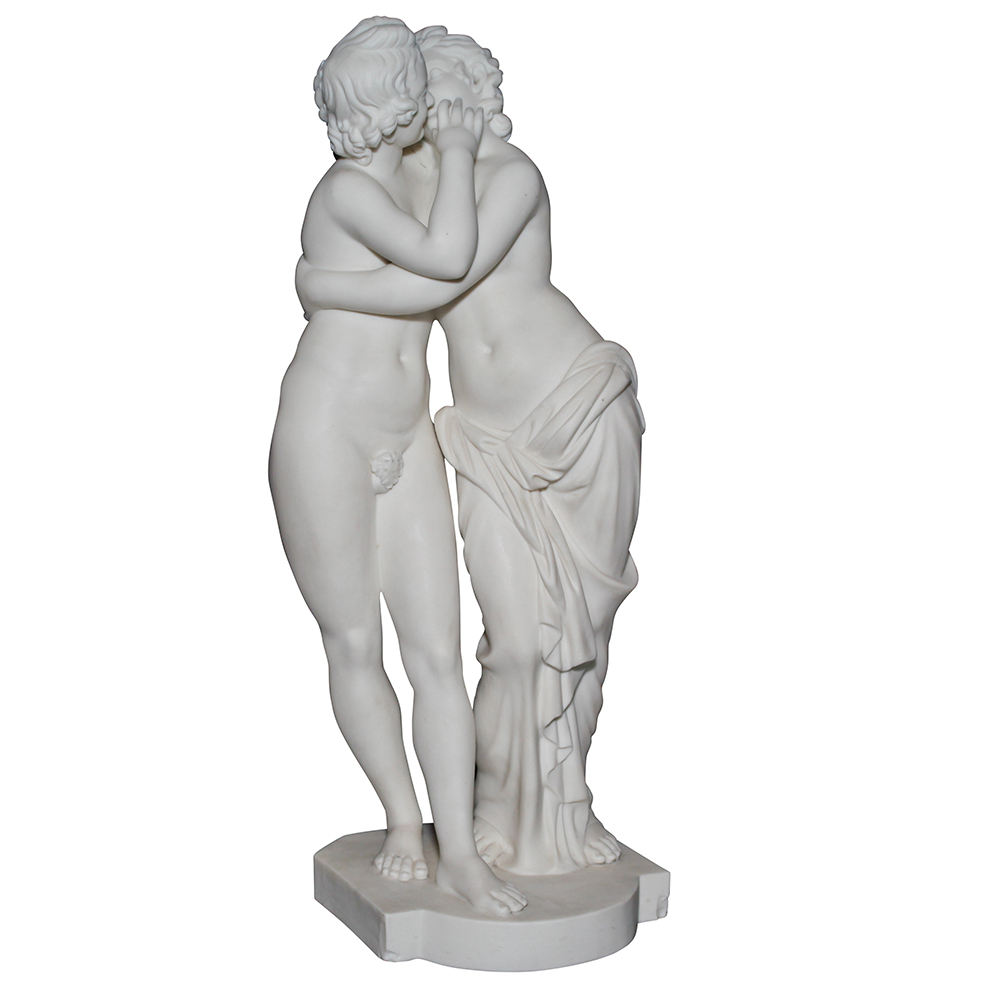
Minton Parian Cupid & Psyche by H. Bourne c.1861
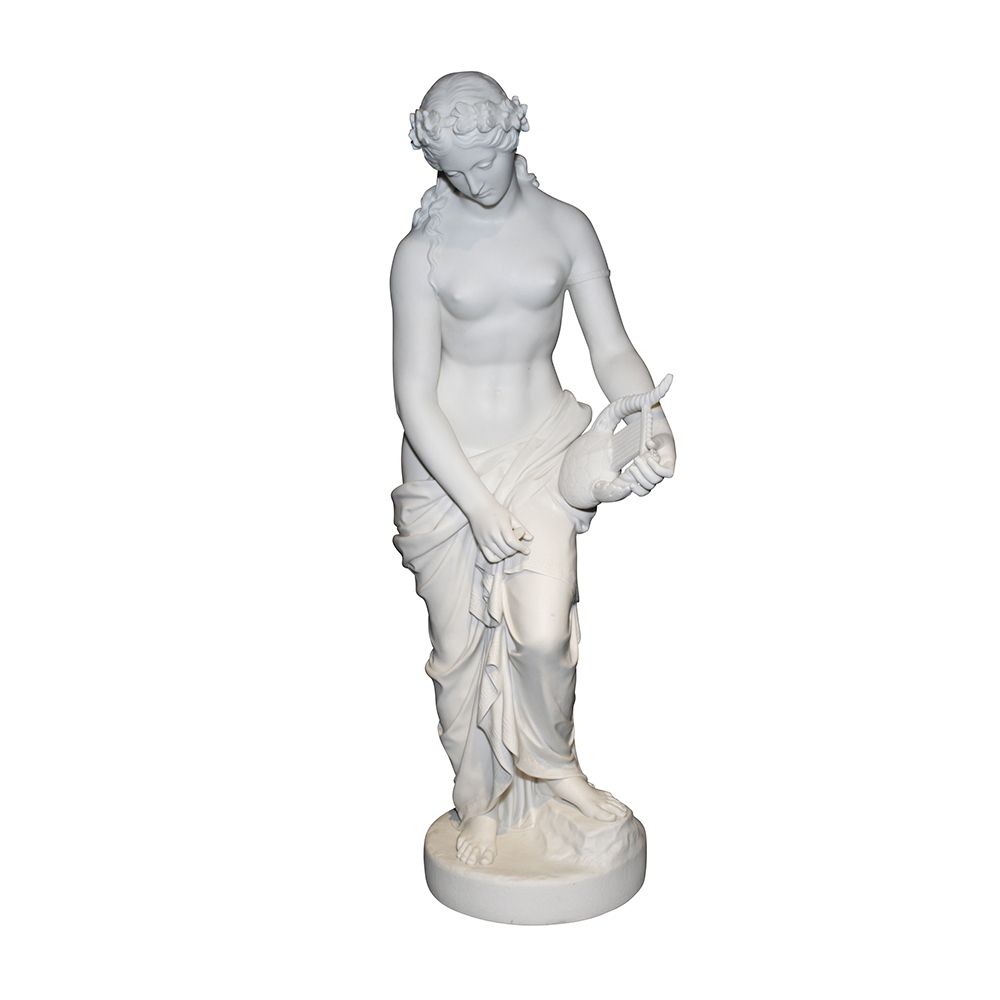
Copeland Parian Sappho by W. Theed c.1873
Majolica Mania
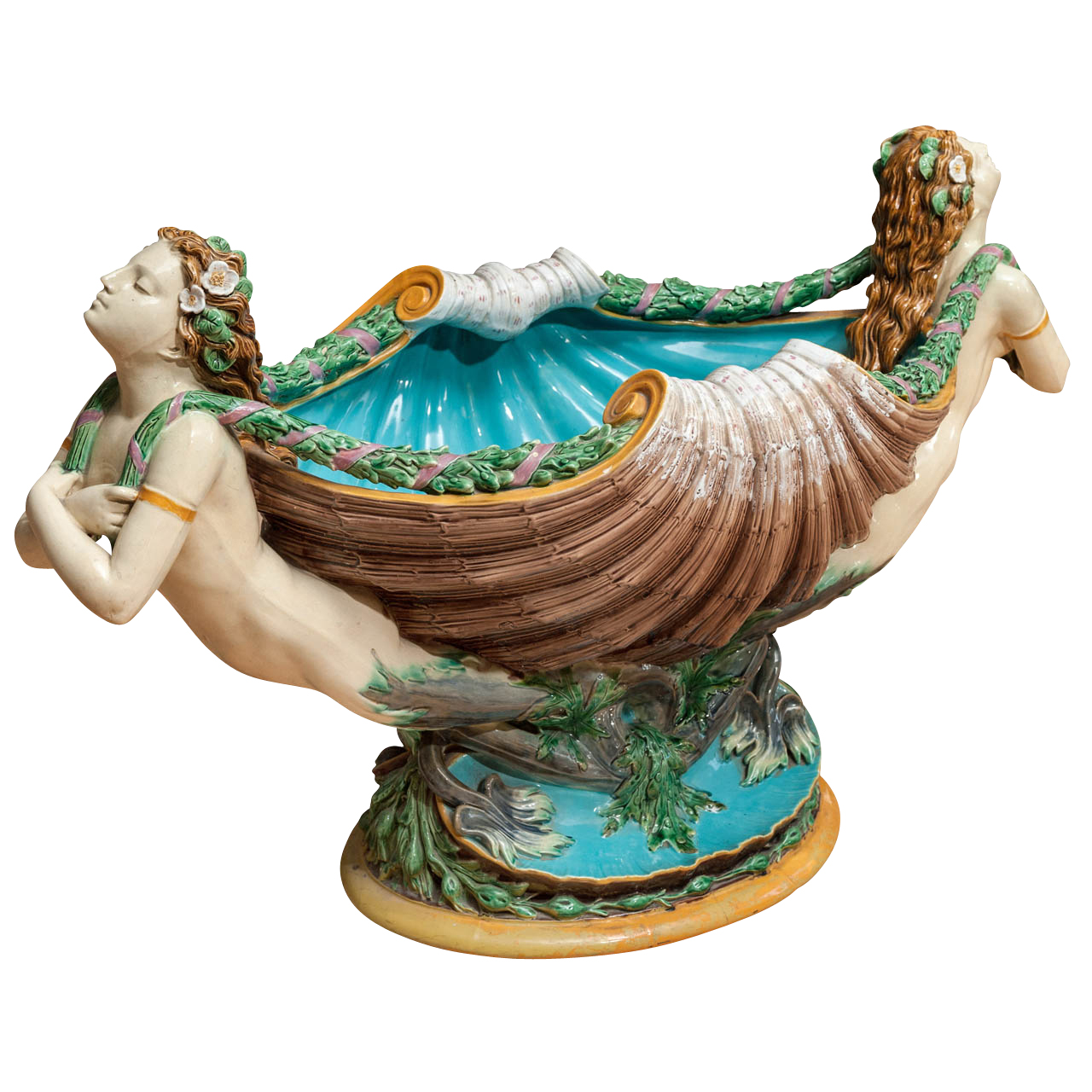
Minton Majolica Mermaids Centerpiece 1862

Minton Majolica Stork Umbrella Stand

Minton Majolica Comedy & Tragedy Vase 1865
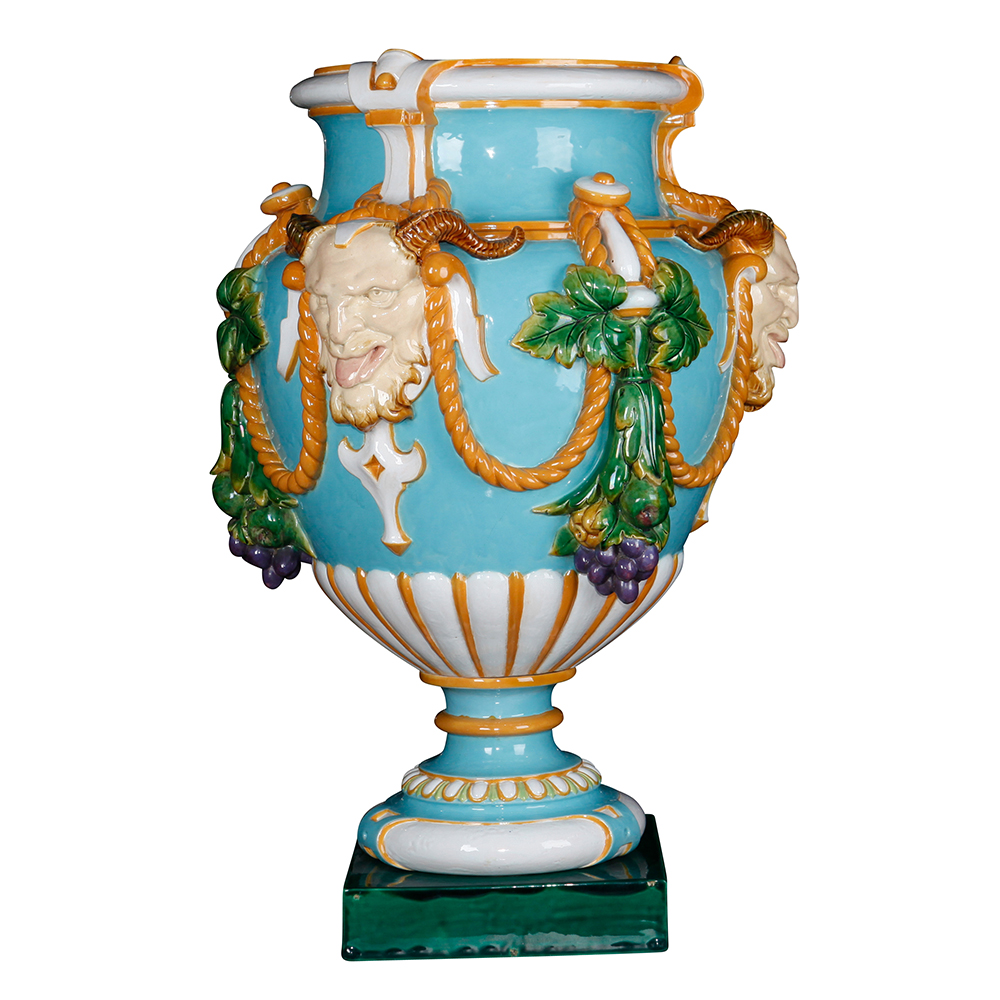
Minton Majolica Bacchus Vase
